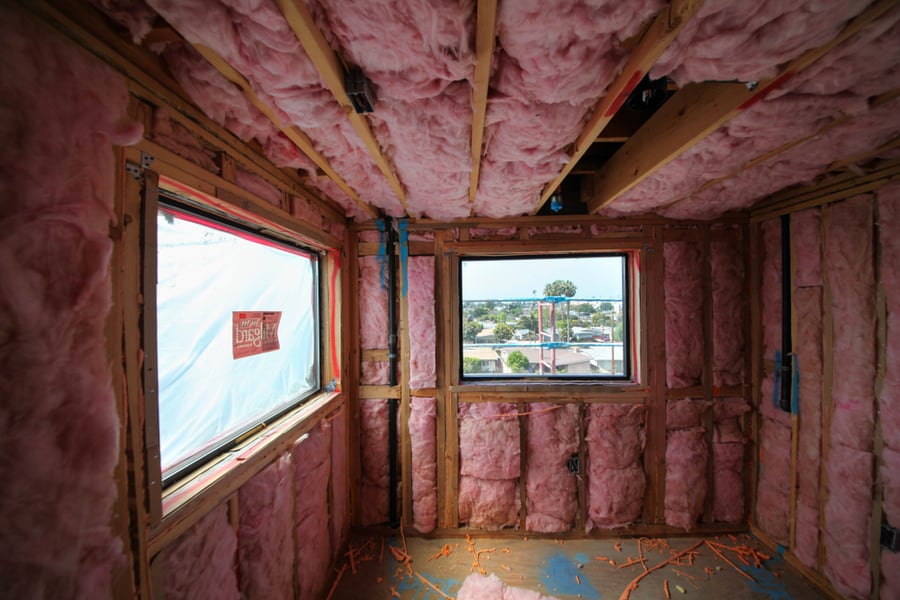
With rising energy costs, many homeowners are looking for ways to make their homes more energy efficient. One of the best ways to control your electric bill is to insulate your home – this prevents heating and cooling from going to waste.
However, with so many products out there, it can be hard to choose the best one. So, which attic insulation is best for California homes?
There are five different kinds of insulation typically used in residential buildings. Each has strengths and weaknesses.
- Cellulose insulation.
- Fiberglass batting insulation.
- Mineral wool insulation.
- Spray foam insulation.
- Radiant barriers.
Generally, fiberglass is the cheapest option, while mineral wool is the best all-around option. If you have the budget and the proper equipment, spray foam has the highest R-value (but has safety concerns).
Radiant barriers are only good if you are primarily concerned about keeping your home cool, as they do not retain heat.
I will explain the R rating system for insulation and compare some popular insulations. In these comparisons, I will rate them on qualities relevant to California’s climate, such as fire resistance, performance in warm weather, and possibly toxic substances required to be disclosed under California law.
Then I will briefly discuss more general qualities such as price and ease of installation.
What is an R-value Rating
I will be using this term a lot in this article. The R-value of insulation is the measurement of how well it resists temperature change. The higher the R-rating, the better the insulation will stop heat loss.
5 Attic Insulations for California Residences
Here are some of the most common insulations used in attics and how they stack against each other in California’s climate.
1. Fiberglass Batting
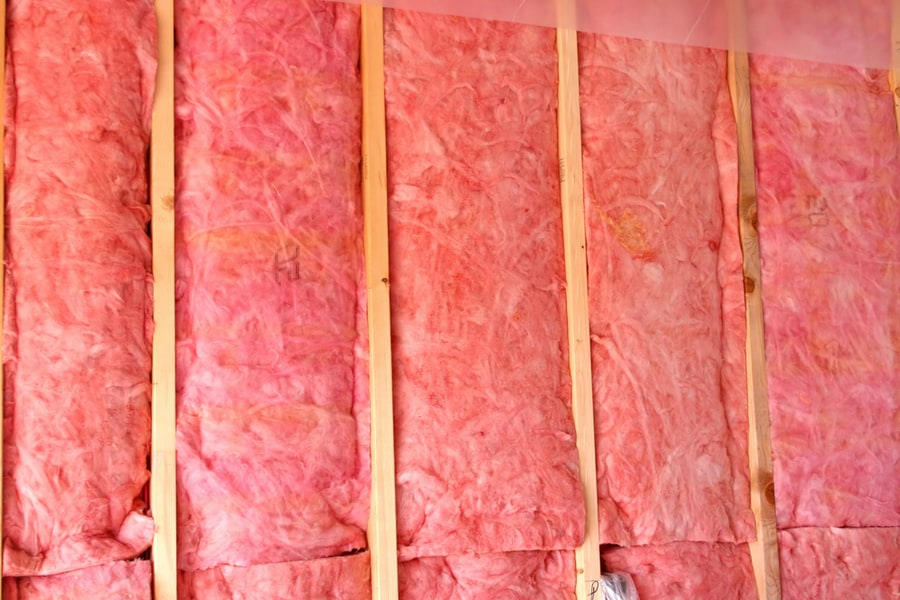
This insulation product comes in a roll. It consists of fiberglass fibers attached to a paper backing.
R-rating
Fiberglass batts will have an R-rating between 2.9 and 3.5 per inch. This means that you will need 6 to 8 inches of insulation to reach the code in California.
Performance in Warm Weather
Unlike most insulations, fiberglass does not have a sharp performance drop-off as temperatures rise. Instead, fiberglass batting traps heat from outside and keeps it from entering the home.
Environmental Resistance
Fiberglass insulation is fire resistant because the fiberglass will not burn. The paper backing, however, will burn and is also prone to black mold growth if it becomes wet.
Safety
Fiberglass insulation has been thoroughly researched, so there are unlikely surprise concerns. You may experience eye, nose, or throat irritation while installing fiberglass insulation. This is due to fibers of glass becoming airborne.
However, once the wall is sealed, no additional exposure will occur. Fiberglass insulation is perfectly safe, and you can wear a dust mask and goggles to avoid discomfort during installation.
Cost
In addition to being very user-friendly, fiberglass rolled insulation is among the cheapest. It will also last much longer than other cheap insulations on the market.
Ease of Installation
Fiberglass batting is very common in attics because it is designed to fit perfectly between supports (when they are built to code). This reduces or even eliminates cutting and measuring.
2. Cellulose Insulation
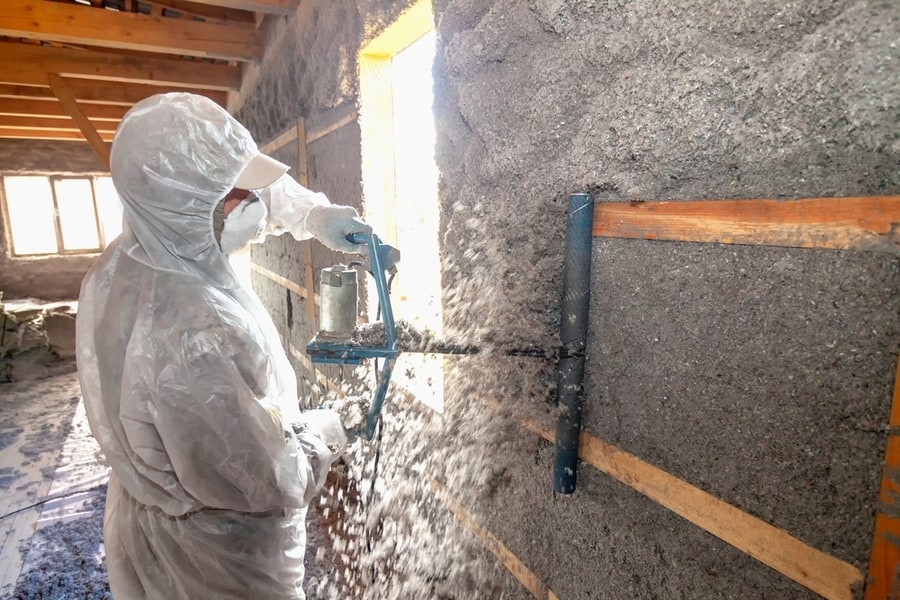
Cellulose Insulation is made from recycled paper goods such as newspapers. It comes in loose bags and sits between beams in the wall.
R-rating
Cellulose has an average R-rating of 3.5 per inch thickness. You’ll need about six inches of insulation to reach the minimum R-rating in California.
Performance in Warm Weather
Cellulose performs slightly worse in temperatures exceeding sixty degrees Fahrenheit. Additionally, it is much better at keeping the home warm than keeping it cool.
Environmental Resistance
The fire resistance of cellulose insulation is very low because it is essentially paper. For this reason, I would not suggest its’ use in locations prone to fire. Additionally, it is unsuitable for locations prone to dampness (such as near the coast) because it can easily get moldy.
Safety
Cellulose is very safe and environmentally friendly. No special equipment or precautions are required to install it.
Cost
Because it is made of recycled materials, cellulose insulation is one of the cheapest options on this list. However, it tends to degrade more quickly, meaning you will spend more money over time as you have to replace it.
Ease of Installation
Cellulose insulation is very easy to install. You will simply drill 2-inch holes into the wall between each stud and insert a blower filled with cellulose.
The loose insulation will be blown into the wall cavity until complete, at which time you will seal up the drill hole and move on to the next section of the wall.
3. Spray Foam Insulation
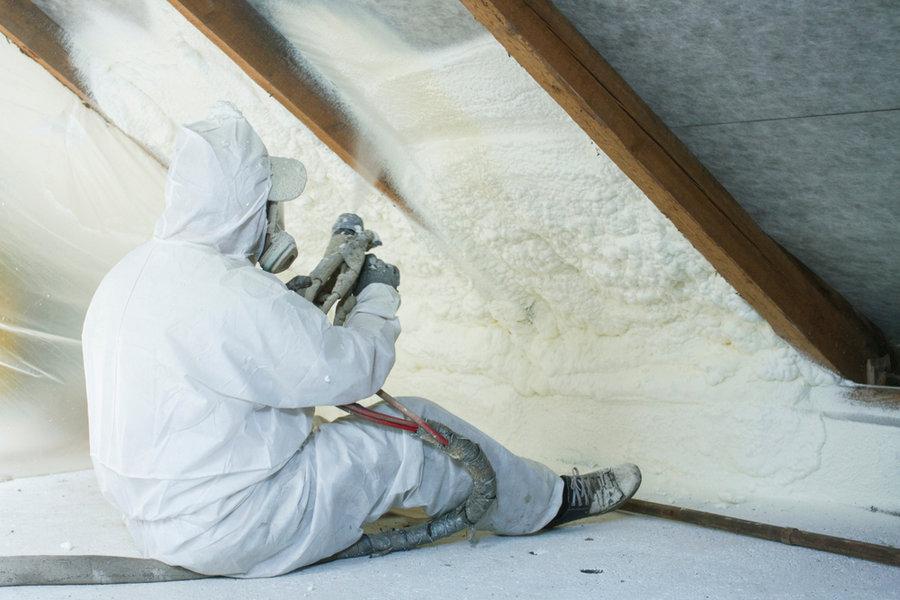
Spray foam insulation, as the name would suggest, is sprayed onto the wall to insulate it. It is made primarily from methylene diphenyl diisocyanate.
R-rating
Spray Foam Insulation has an extremely high R-rating (5.0 to 7.0 per inch thickness). You need only three-inch thick spray insulation to reach California’s R-rating standards.
Performance in Warm Weather
Spray foam insulation is air impermeable, meaning that cool air cannot escape the home, and warm air cannot enter during hot temperatures. The result is that your house will stay much cooler than the outdoor temperature.
Environmental Resistance
There are two types of Spray Foam Insulation, which differ in their weather resistance. Closed-cell insulation is very moisture resistant, while open-cell insulation is less so. Open-cell foam insulation is very prone to moisture damage.
Both types of spray foam insulation are combustible, meaning they will ignite if exposed to high enough heat. Most local laws require spray foam insulation to be coated in fire-retardant paint to mitigate this.
Safety
MDI (methylene diphenyl diisocyanate) is a toxic chemical that should not be handled by amateurs. Heavy chronic exposure has been linked with new or worsening lung conditions (asthma and bronchitis).
At this time, not enough research has been done to determine for certain whether MDI is a carcinogen, but it is better to be safe than sorry. Luckily, these dangers only apply to handling or installing MDI. Once it is sealed into the wall cavity, there is no further known risk.
Cost
The cost of spray foam is double to triple that of fiberglass insulation. This hefty price tag comes from the specialized equipment used to install it and the hazard pay the workers usually receive.
Ease of Installation
While just spraying something onto the walls might sound easy, it requires special equipment and training. This is because MDI is a hazardous substance. You would need the application tool, which is very expensive, as well as a full suit of PPE to prevent contact with skin or inhalation.
4. Mineral Wool
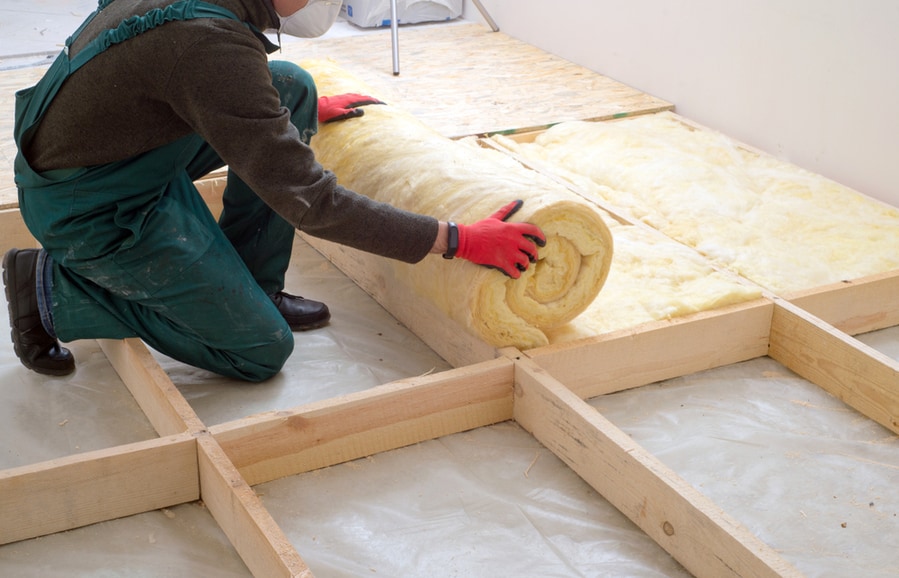
Mineral wool is typically made of molten rock, which is slowly stretched and cooled to form a fabric batting. This material is then used as insulation or soundproofing.
R-rating
Mineral wool has a decent R-rating of 4.0 per inch thickness. To reach minimum California requirements, you need 5-inch thick mineral wool insulation. It is also hydrophobic, meaning it repels and will not absorb moisture. This discourages mold growth and corrosion.
Performance in Warm Weather
Mineral wool will perform well in warm weather, allowing the house to stay cool. Mineral wool can trap and avoid the transfer of exceptionally large amounts of heat.
Environmental Resistance
Mineral wool is not flammable. It also has a very high melting temperature. This means that it performs excellently in case of fire and can even be used as a fire stop.
Safety
Mineral wool has been around for a long time and is one of the market’s most heavily researched insulation types. There are no known long-term safety concerns from mineral wool exposure.
During installation, minor skin and respiratory irritation may occur, but this can be prevented by wearing a dust mask and showering shortly after installation.
Cost
Mineral wool is generally mid-range in expense. Fiberglass and cellulose will both be cheaper, while spray foam and radiant barriers are more expensive.
Ease of Installation
Mineral wool insulation, like fiberglass batting, comes in premeasured pieces designed to fit perfectly in standard homes. This means it is very easy to install.
5. Radiant Barrier
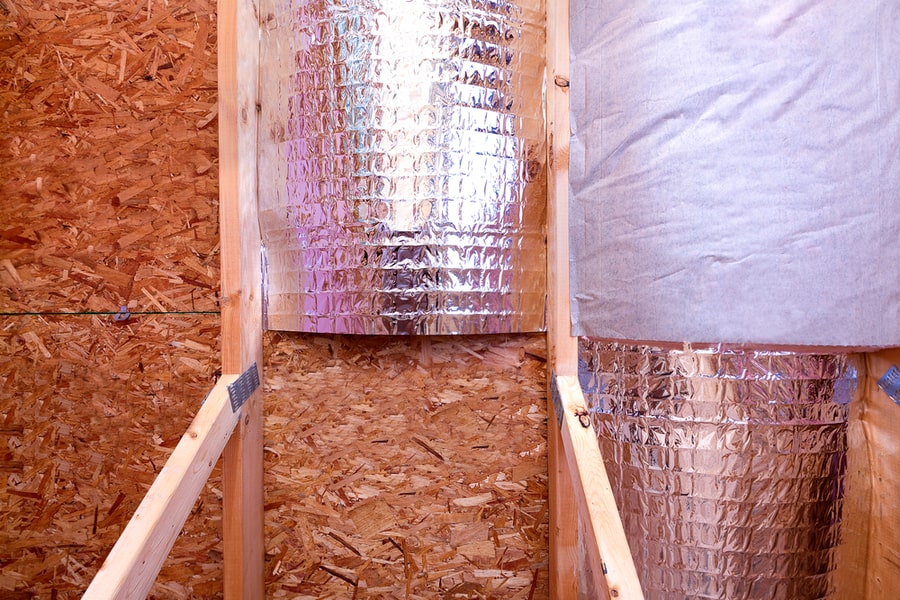
Radiant Barriers are geared towards keeping spaces cooler instead of keeping them warm. The surface (such as a window or floor) includes a reflective material such as aluminum. This reflects the heat away from the living spaces and back towards the roof.
R-rating
Because radiant barriers work by “bouncing” the heat outwards rather than trapping it, they have no R-rating.
Performance in Warm Weather
Radiant Barriers perform exceptionally well in warm weather. They will keep spaces cool better than almost any other type of insulation. However, keep in mind that they provide zero insulation in cold weather.
Environmental Resistance
Radiant barriers tend to be very fire resistant because they are made from materials such as metal or glass and are not flammable. They are also mold resistant and more suitable for wet locations than other insulation types.
Safety
Radiant barriers pose no known safety hazards.
Cost
The cost of installing a radiant barrier varies depending on whether you choose single or double-sided radiant barriers. Single-sided is much cheaper, while double-sided can mean double the price.
Ease of Installation
many radiant barriers can be stuck to a surface using adhesive, much like wallpaper. Other types can be stapled or nailed into place. This type of insulation tends to be easy to install.
The Verdict

- The best option for those with tight budgets is fiberglass batting insulation.
- I do not recommend cellulose because it is highly flammable and very prone to mold.
- If you are looking for the best all-around option, then choose mineral wool insulation. It is well-researched for safety, is fire retardant, highly moisture resistant, and still cheaper than several other options.
- If you do not need heat retention and have a large budget, then a radiant barrier may perform well in hotter parts of California.
- I do not suggest spray foam insulation because of potential unknown safety concerns and high prices. I also think the r-rating is overkill for California.
Summary
When choosing attic insulation for your California home, you will need to adhere to code regulations such as minimum R-rating. Additionally, you may be concerned about how the insulation will handle fire or moisture. The safety of the material you are using is also essential.
The best choice for insulating the typical California residence will be mineral wool. This is due to a balanced cost-to-R-value ratio and high fire and moisture resistance.
Frequently Asked Questions
Do environmental factors affect R-rating?
Yes, several factors can affect R-rating. The number on the insulation is simply the way the material is performed in a test environment. The actual performance in the real world varies wildly based on humidity, temperature, and position.